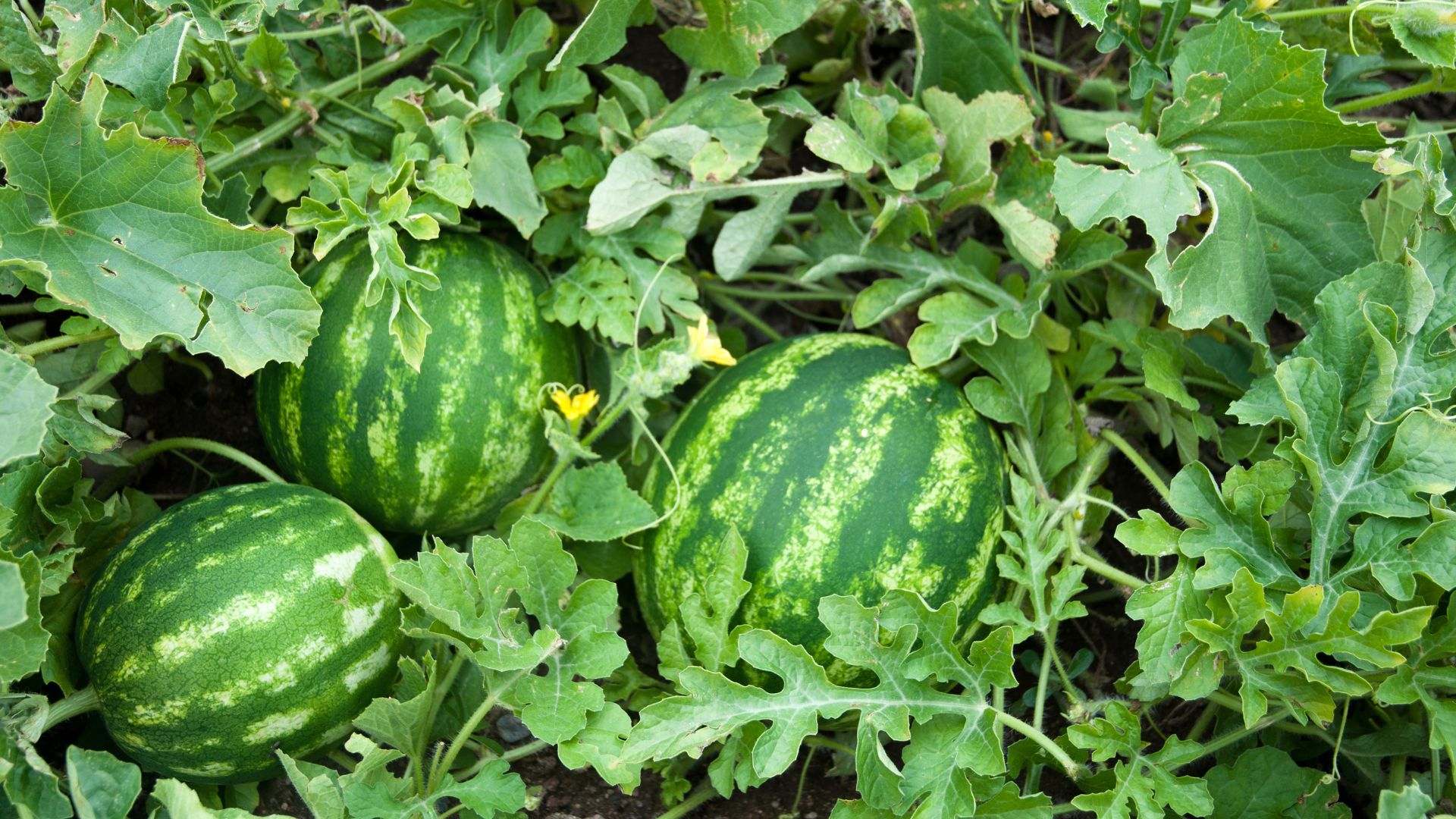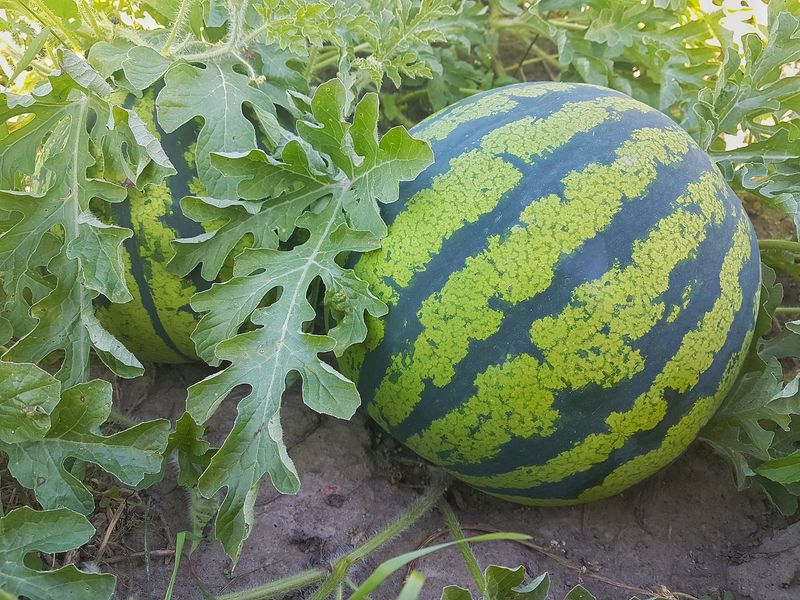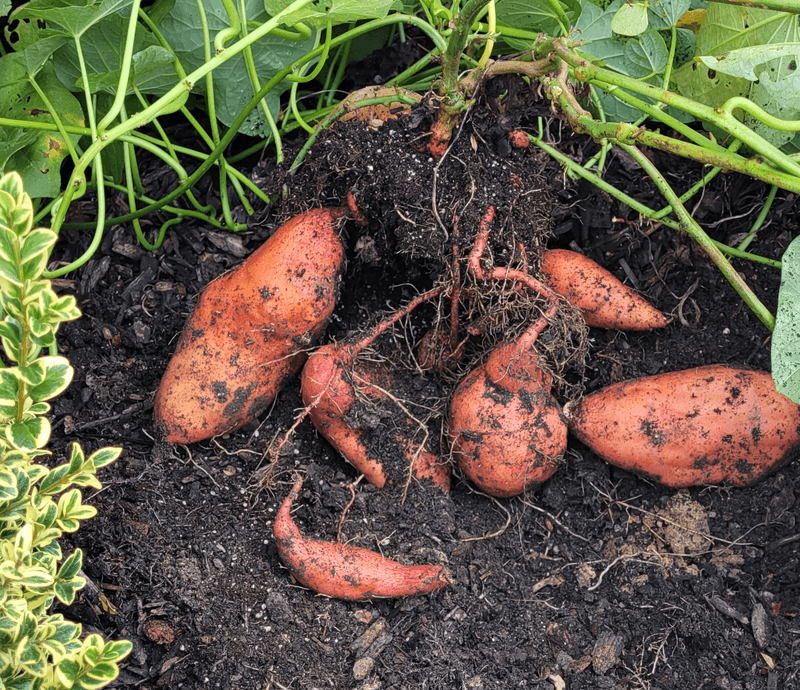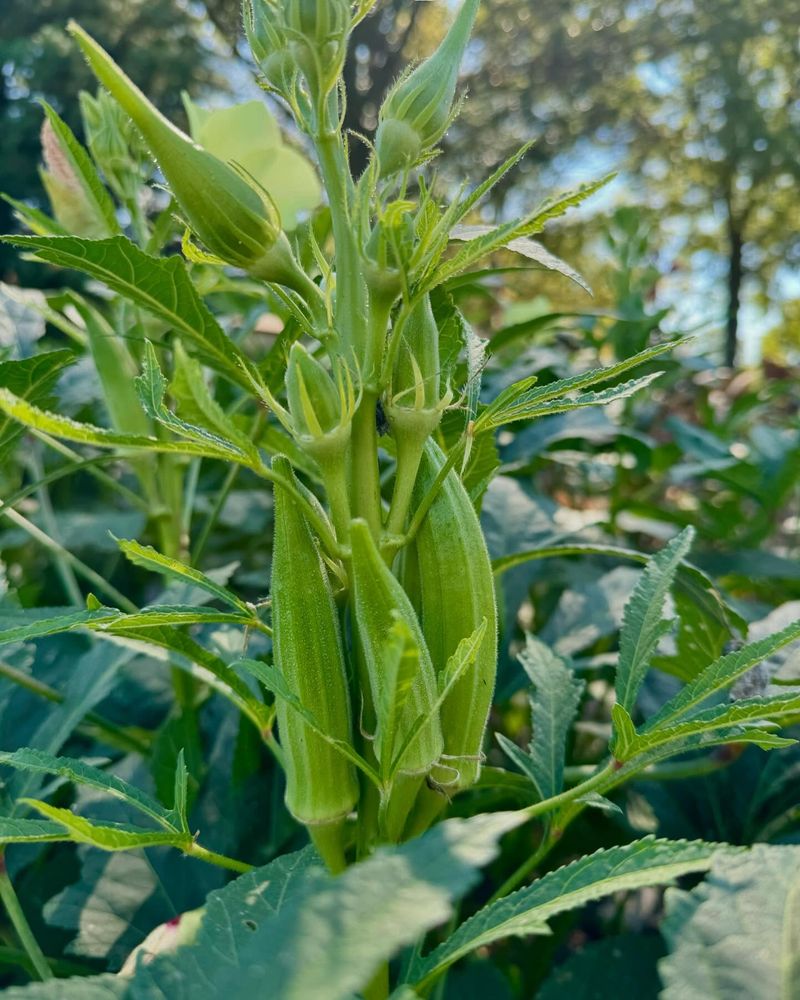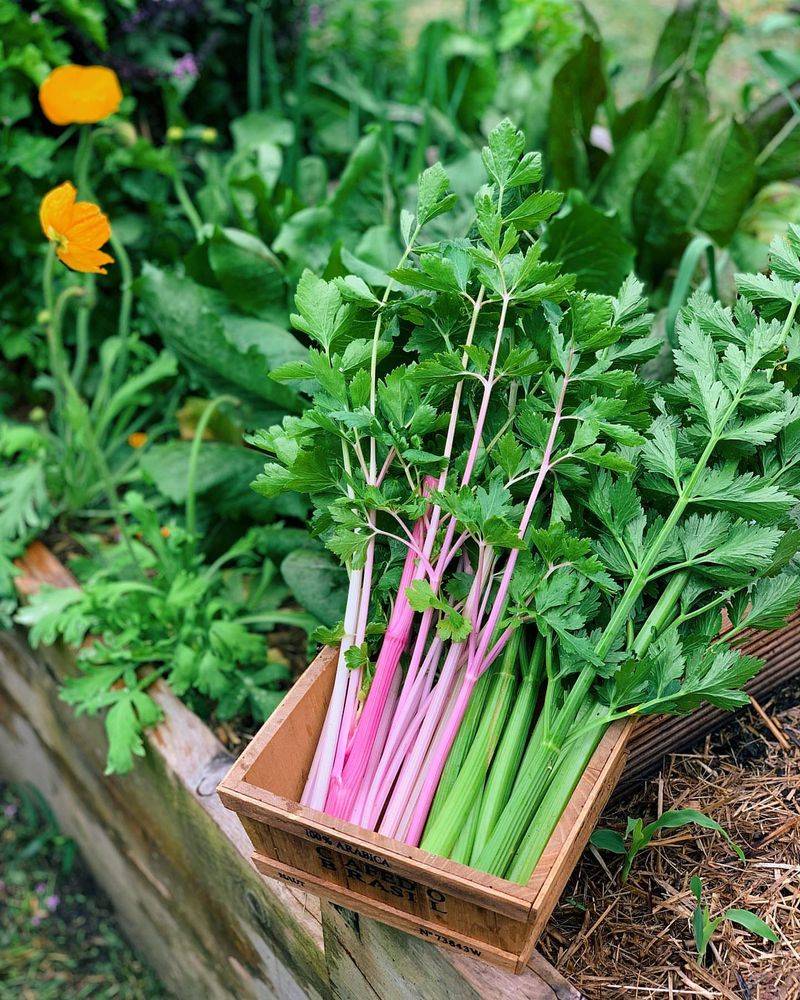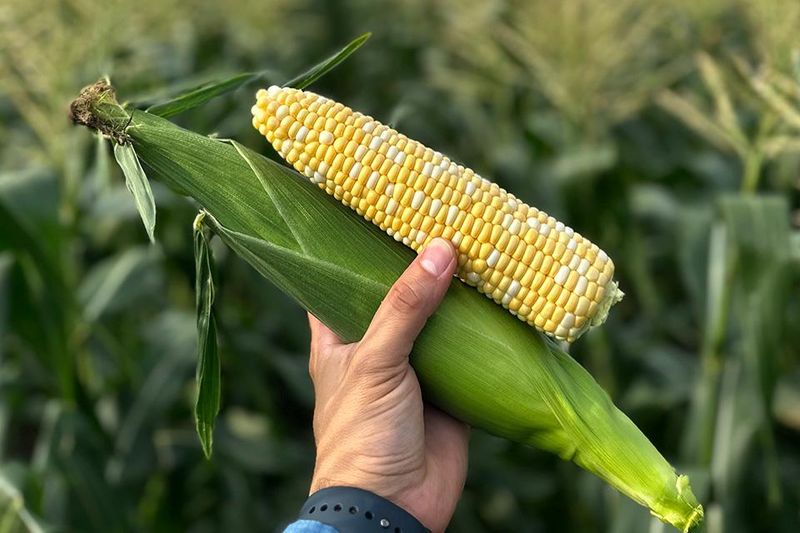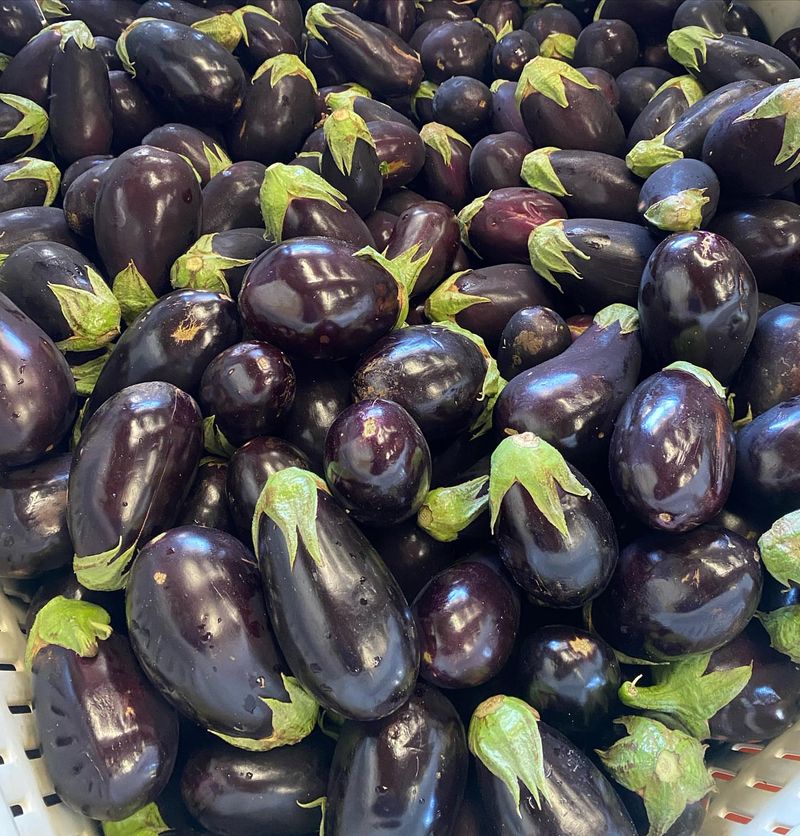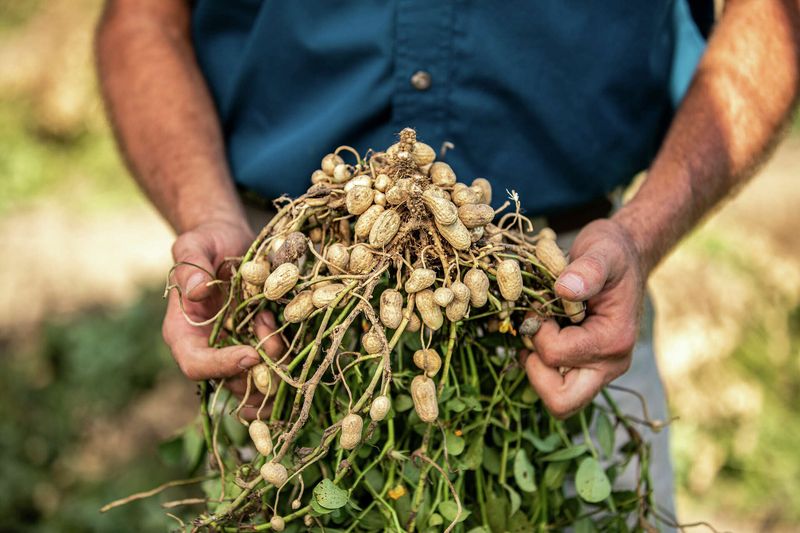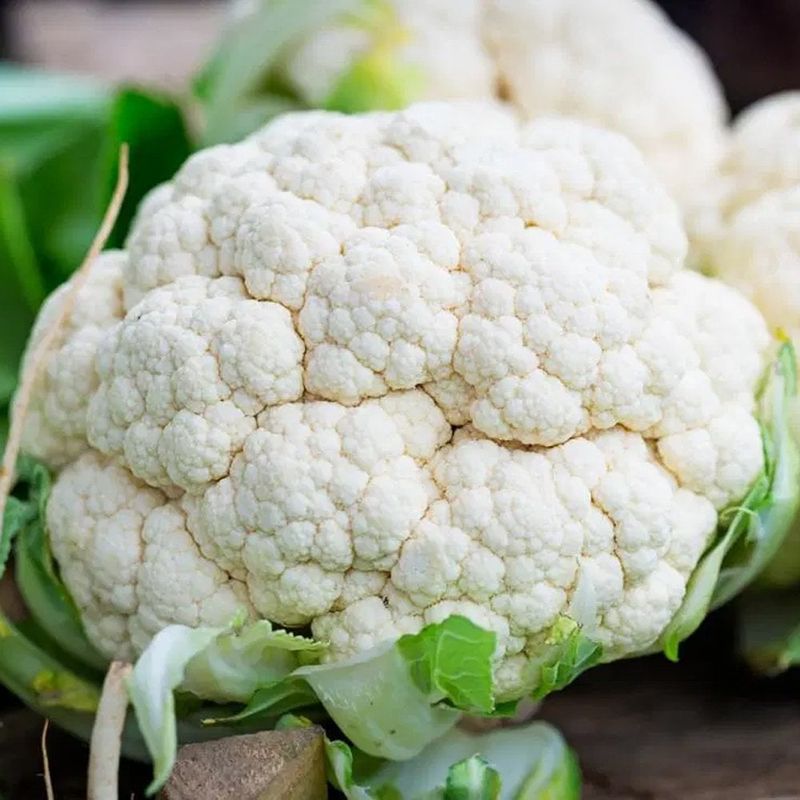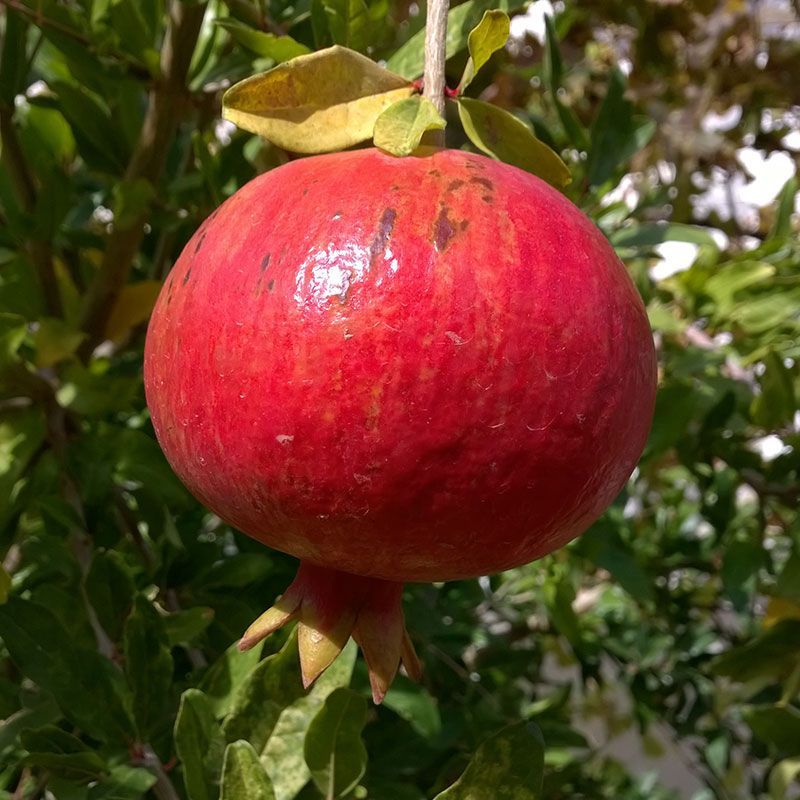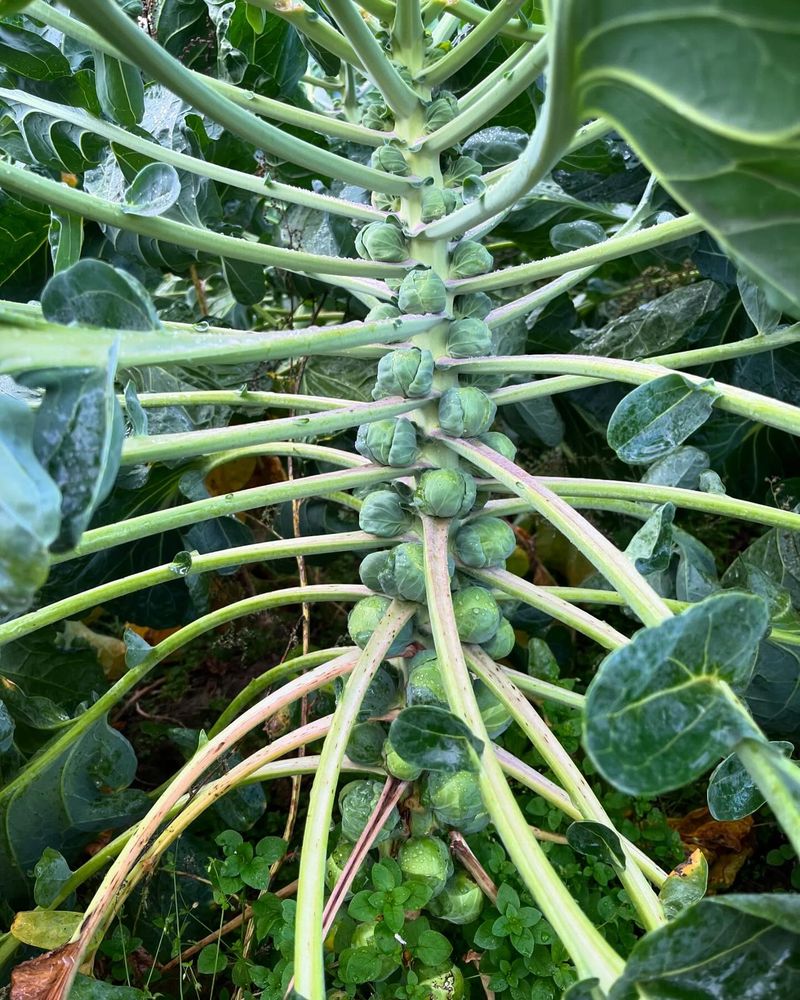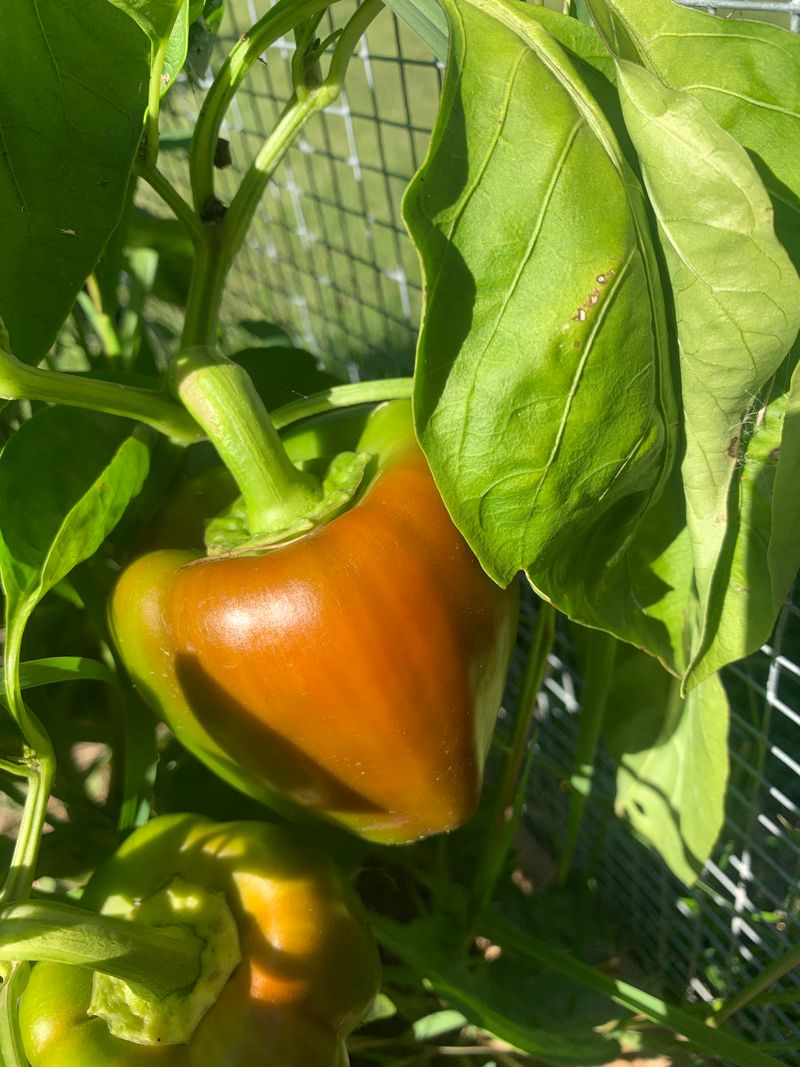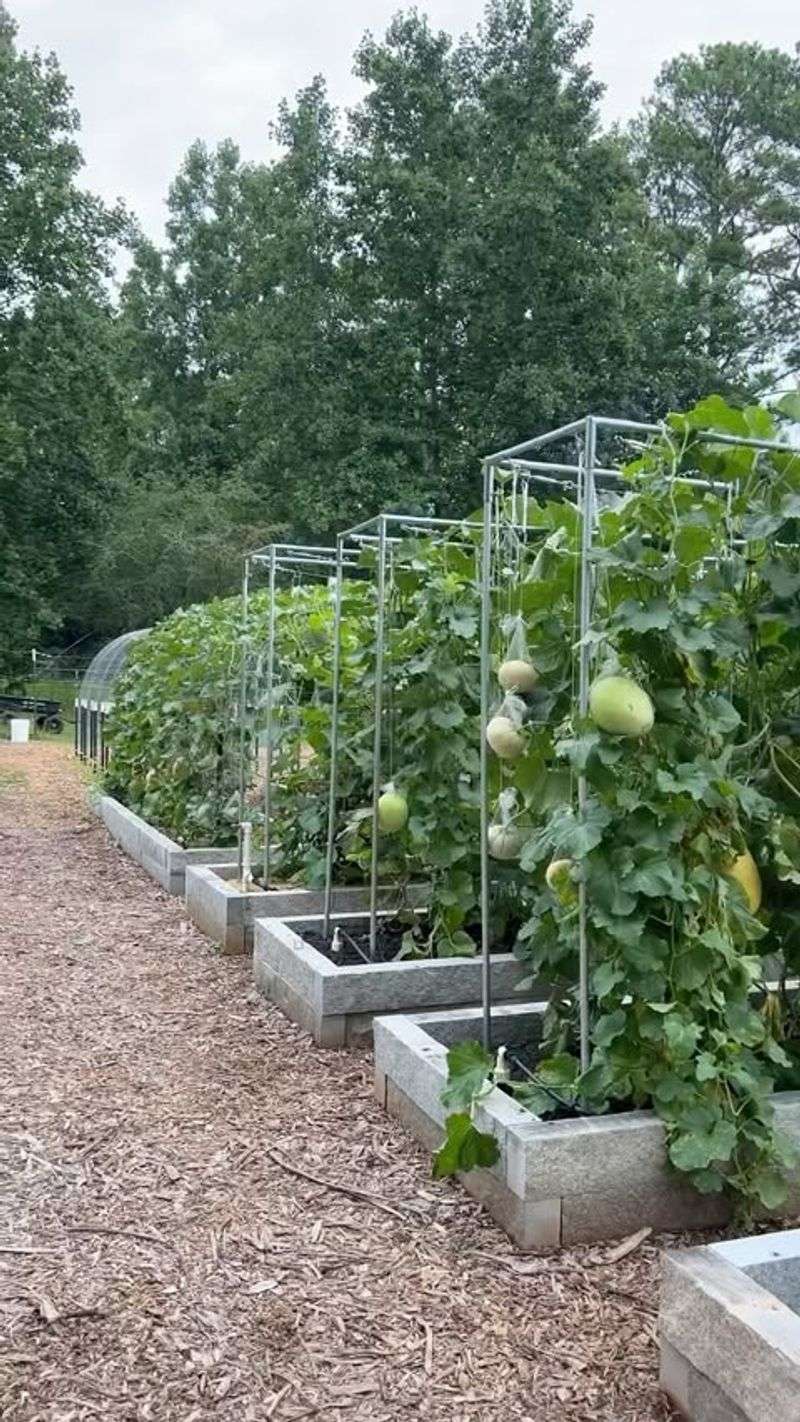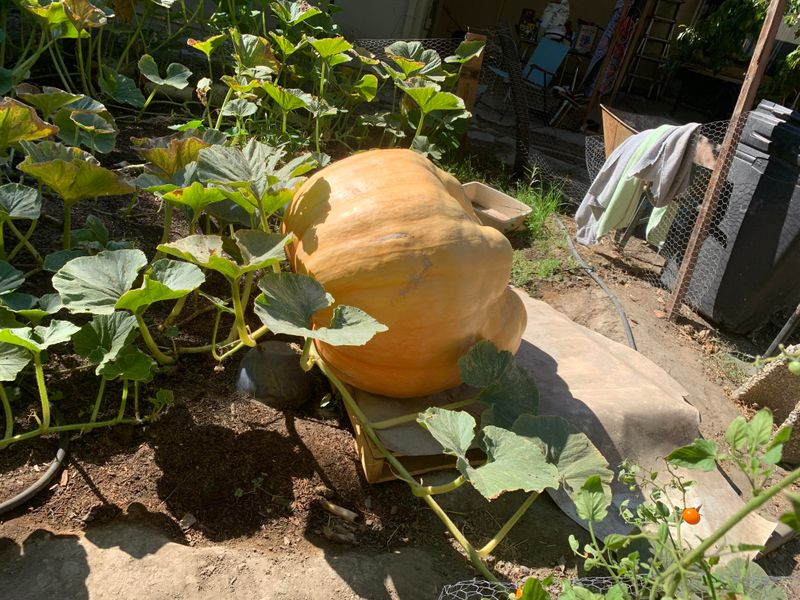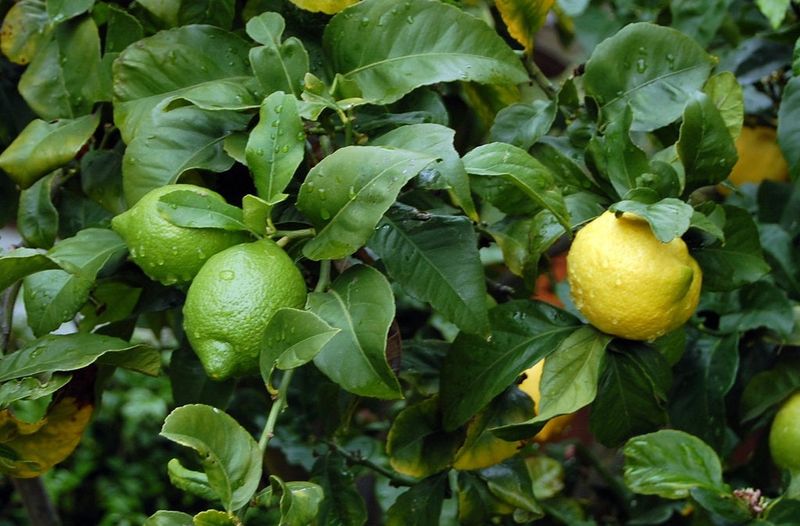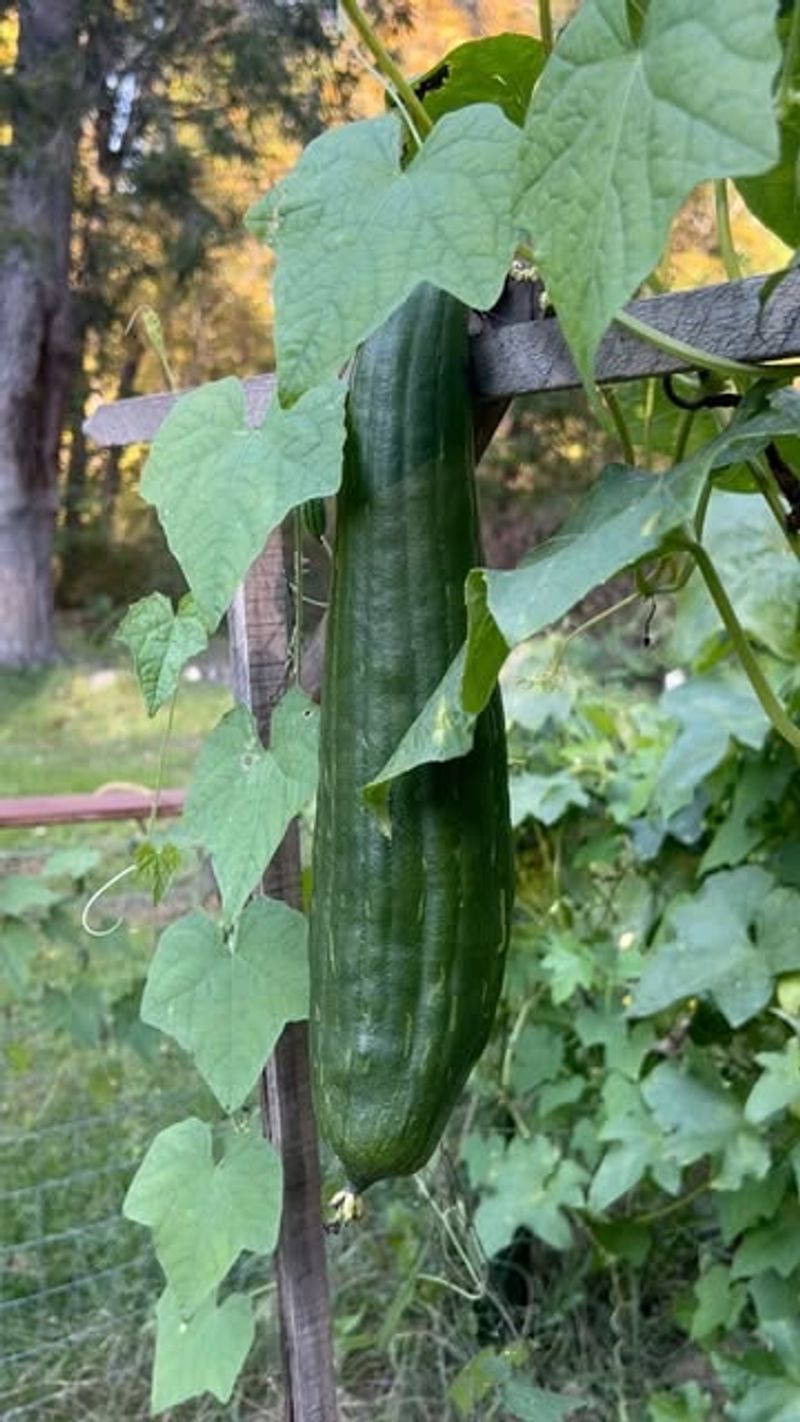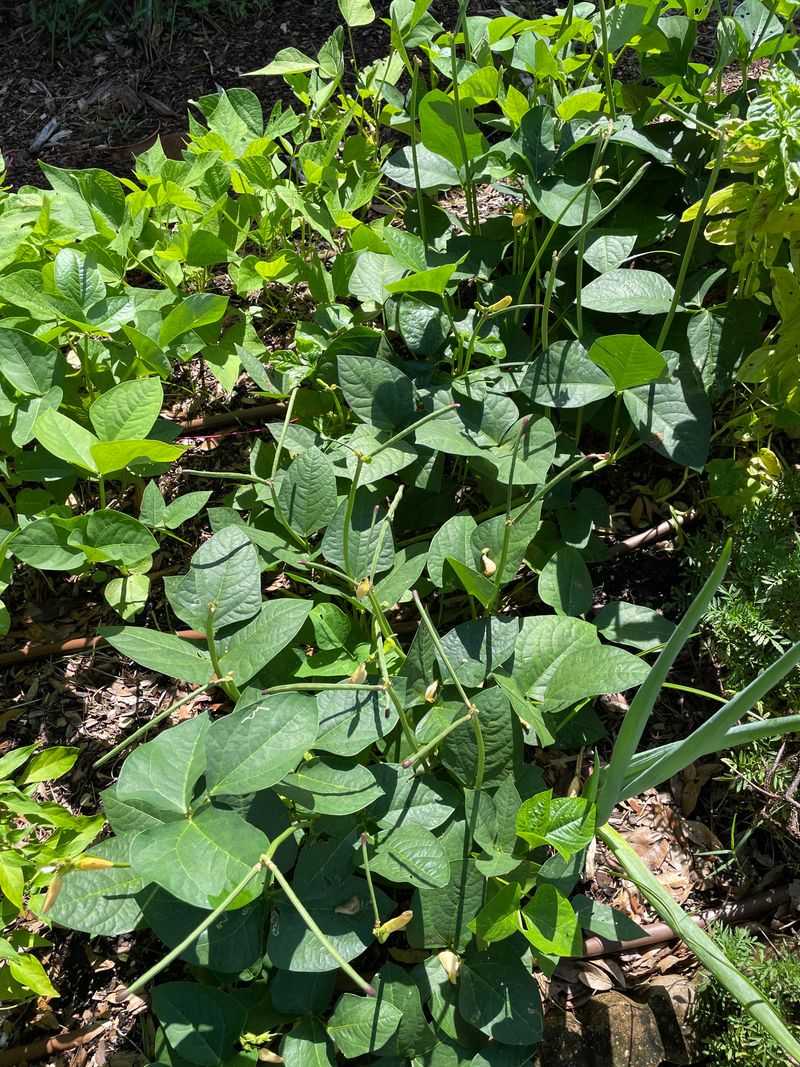Gardening in Illinois keeps you on your toes—with wild weather, dense clay soil, and growing seasons that feel like they’re over before they start. Many promising crops on those seed packets don’t stand a chance without serious babying, leading to more frustration than fresh produce.
I’ve found that swapping out those finicky favorites for region-ready alternatives makes a huge difference. Instead of struggling with artichokes or cauliflower, opt for heat-tolerant beans, leafy greens, or root veggies that thrive in Midwest conditions.
This list of 18 regret-worthy crops—plus their smarter swaps—can save you time, energy, and disappointment. With the right plants in the right place, your Illinois garden can go from underwhelming to overflowing in no time.
1. Watermelon
Our shorter growing season often leaves these summer favorites immature or bland. Many Illinois gardeners watch their vines spread impressively only to harvest disappointing, undersized fruits that never develop full sweetness.
The heavy clay soil common throughout much of the state also retains too much moisture for these plants, potentially causing root rot and fungal issues.
Try growing Sugar Baby or Blacktail Mountain varieties instead, as they mature quickly. Even better, switch to cantaloupe or honeydew melons, which ripen faster and handle our soil conditions much better.
2. Artichokes
Growing these Mediterranean natives in Illinois usually leads to disappointment. They require a specific climate pattern of mild winters and cool summers that our state simply doesn’t provide.
Most varieties need two growing seasons to produce edible flower buds, but our harsh winters kill the plants before they can complete their lifecycle. I tried growing them three years in a row before finally accepting defeat.
Sunflowers make an excellent alternative – they’re native to North America, thrive in our climate, provide beautiful blooms, and produce nutritious seeds with similar heart-healthy benefits.
3. Sweet Potatoes
Many gardeners in northern Illinois find sweet potatoes frustrating because our growing season barely gives them enough time to develop properly. The vines grow beautifully, creating false hope.
Last summer, my neighbor dug up her crop after tending the plants for months, only to find tiny, underdeveloped tubers that weren’t worth the effort. The clay soil throughout much of the state also restricts their growth.
Regular potatoes, especially early varieties like ‘Red Norland’ or ‘Yukon Gold,’ are much more reliable in our climate and soil conditions while providing similar nutritional benefits.
4. Okra
Despite its popularity in Southern cooking, okra typically struggles in Illinois gardens. This heat-loving crop often languishes during our variable summer temperatures, producing tough, fibrous pods that aren’t worth harvesting.
The plants seem to just sit there during cool spells, never reaching their full productive potential. Many gardeners also dislike the plant’s prickly stems, which can cause skin irritation during harvest.
Green beans make a superior alternative, offering similar nutritional benefits with much more reliable production. Bush varieties like ‘Provider’ or ‘Blue Lake’ thrive in our climate and produce abundantly throughout the season.
5. Celery
Growing celery in Illinois often results in bitter, stringy stalks that bear little resemblance to store-bought versions. The long growing season required (100+ days) makes timing difficult with our unpredictable spring and fall weather.
During hot Illinois summers, celery tends to bolt quickly, becoming practically inedible. The constant moisture requirements also make it susceptible to diseases in our humid climate.
Chinese celery or lovage makes a better choice for Illinois gardens. Both provide the celery flavor you crave for soups and stews while being much more adaptable to our growing conditions.
6. Long-Season Corn Varieties
Many gardeners grab corn seed without checking maturity dates, ending up with varieties that need 100+ days to harvest. These long-season types often get caught by early fall frosts or suffer during late-summer droughts.
The real heartbreaker comes when you wait all summer only to harvest underdeveloped ears with missing kernels. After experiencing this disappointment myself, I learned to be more selective.
Early-maturing sweet corn varieties like ‘Early Sunglow’ or ‘Sugar Buns’ (75-80 days) perform much better in our climate, giving you delicious corn before problems typically set in.
7. Globe Eggplant
Traditional large globe eggplants frequently disappoint Illinois gardeners. They require consistent warm temperatures that our climate doesn’t reliably provide, often resulting in stunted growth and minimal fruit production.
Even when the plants look healthy, they may produce just a few eggplants after months of care. Flea beetles also seem particularly attracted to these varieties, turning leaves into lace within days.
Asian eggplant varieties like ‘Ping Tung Long’ or ‘Millionaire’ perform much better in our climate. They mature faster, produce more consistently, and seem less attractive to pests while offering the same culinary uses.
8. Peanuts
Growing peanuts in Illinois typically ends in disappointment. These legumes need a long, warm growing season of 120+ days and light, sandy soil – two things most Illinois gardens lack.
The clay soil that dominates much of the state restricts the plants’ ability to form peanuts underground. Most gardeners harvest only a handful of tiny peanuts after a full season of care.
Bush beans or dry beans make excellent alternatives, offering similar protein content with much better adaptation to our growing conditions. Try ‘Great Northern’ or ‘Black Turtle’ varieties for reliable harvests.
9. Cauliflower
Cauliflower earns its reputation as one of the most finicky vegetables in Illinois gardens. The heads (“curds”) easily discolor and become bitter when exposed to our hot summer sun, while temperature fluctuations cause them to button or bolt before forming properly.
Last spring, I babied six cauliflower plants for weeks only to harvest tiny, loose heads that weren’t worth the garden space. The frustration level simply isn’t worth it for most home gardeners.
Broccoli makes a much more forgiving alternative with similar nutritional benefits. It tolerates temperature swings better and produces side shoots even after the main head is harvested.
10. Pomegranates
The dream of homegrown pomegranates quickly turns into a nightmare for Illinois gardeners. These Mediterranean fruits need hot, dry summers and mild winters – the opposite of our humid summers and frigid winters.
While the plants might survive in containers brought indoors for winter, they rarely produce fruit in our climate. Even dedicated gardeners find themselves nursing along beautiful but unproductive shrubs year after year.
For antioxidant-rich fruits that actually thrive here, plant aronia berries (chokeberries) instead. These native shrubs produce abundant berries perfect for juicing and preserves while handling our weather beautifully.
11. Brussels Sprouts
Brussels sprouts frequently disappoint Illinois gardeners despite seeming well-suited to our climate. The long growing season required (100+ days) makes timing critical, and many gardeners plant too late or harvest too early.
Cabbage worms and aphids seem particularly drawn to these plants in our region. Even with diligent care, many gardeners end up with loose, poorly formed sprouts that never develop the tight heads we expect.
Collard greens provide similar nutritional benefits with much less fuss. They tolerate both heat and cold better than Brussels sprouts and can be harvested continuously throughout the season.
12. Bell Peppers
Standard bell peppers often struggle to ripen fully in many Illinois gardens. Gardeners watch in frustration as green peppers hang on plants until frost without ever turning red, yellow, or orange.
Our growing season simply isn’t long enough for many varieties to complete their color change. The plants also tend to stop setting fruit during our hottest summer weeks, limiting overall production.
Faster-maturing varieties like ‘Ace’ or ‘New Ace’ perform much better here. Even better, try Hungarian wax peppers or banana peppers, which produce abundantly and ripen quickly in our climate.
13. Melons (Except Cantaloupe)
Exotic melons like Crenshaw, casaba, and honeydew often fail to reach maturity in Illinois gardens. They need long, hot growing seasons that our state can’t consistently provide, especially in northern counties.
Many gardeners find themselves with beautiful vines but underripe fruit when frost threatens. The heavy clay soil in many parts of Illinois also retains too much moisture, leading to root diseases and fruit rot.
Cantaloupe (muskmelon) varieties like ‘Minnesota Midget’ or ‘Sugar Cube’ mature much faster and handle our growing conditions better while still providing that sweet, summer melon experience.
14. Pumpkins (Giant Varieties)
Growing competition-sized pumpkins leads to disappointment for most Illinois gardeners. These giants require excessive space, constant attention, and perfect conditions rarely found in home gardens.
The massive vines quickly take over, yet often produce just one or two pumpkins that fail to reach impressive sizes without specialized care. Diseases like powdery mildew and squash vine borers hit these varieties particularly hard in our humid climate.
Pie pumpkins or jack-o’-lantern varieties like ‘Howden’ or ‘Small Sugar’ make much more practical choices, producing multiple fruits per plant while requiring far less space and maintenance.
15. Citrus Trees
The allure of homegrown oranges, lemons, or limes tempts many Illinois gardeners into disappointment. Even in containers moved indoors for winter, these trees rarely thrive in our low-light conditions during the crucial winter months.
Most citrus grown here becomes infested with scale insects or spider mites indoors. The fruits, if they form at all, often drop before ripening or develop with thick, bitter rinds and minimal juice.
For container fruit that actually performs well, try dwarf cherry trees or fig varieties like ‘Chicago Hardy.’ Both can be overwintered in garages or basements and will reliably produce fruit during summer.
16. Luffa Gourds
Growing luffa gourds for homemade sponges sounds appealing, but most Illinois gardeners end up with immature gourds when frost hits. These tropical vines need at least 150-200 warm days to produce usable sponges – longer than our growing season allows.
My own attempt resulted in dozens of small, undeveloped gourds that couldn’t be processed into sponges. The plants grew beautifully but simply ran out of time to complete their lifecycle.
For natural sponge alternatives, grow loofahs indoors starting in February, or switch to growing abundant cucumber varieties like ‘National Pickling’ that thrive in our climate and can be enjoyed throughout summer.
17. Southern Peas (Black-Eyed Peas)
Southern peas seem promising but typically underperform in Illinois gardens. These heat-loving legumes develop slowly in our climate and often succumb to early fall frosts before producing a significant harvest.
The high humidity throughout summer makes them susceptible to powdery mildew and other fungal diseases. After growing them for several seasons, I’ve found the yield rarely justifies the garden space they require.
Snow peas or snap peas are much better suited to our growing conditions. Spring-planted peas produce abundantly before summer heat arrives, and fall plantings often yield a second harvest before winter.

